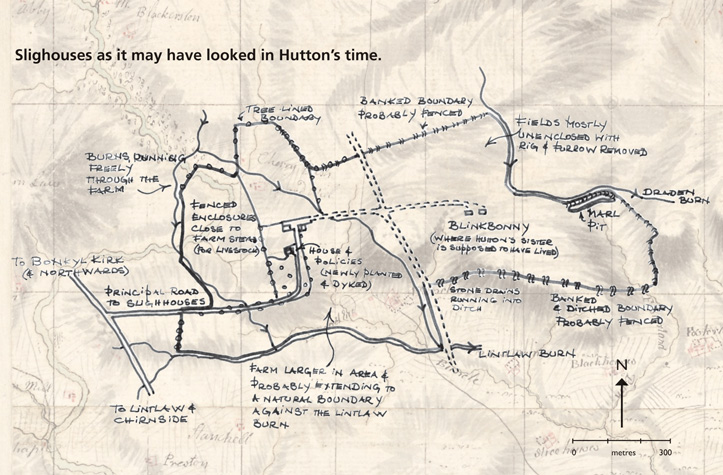 |
|
James Hutton described Slighhouses and its surrounding countryside when he started farming as “A cursed country where one has to shape everything out of a block and to block everything out of a rock….” Slighhouses was an open field, with extensive rig and furrow which Hutton removed by ploughing. Although the mid-1700s was a time of great agricultural change, it was slow to reach Scotland and the enclosure of the open field system came later than the rest of Britain. Map evidence shows us that Hutton was well ahead of his neighbours in enclosing and improving Slighhouses . A contemporary description also states “The doctor began in earnest to improve a very wild and uncultivated piece of land; all of it was an open field, stones were to be split, fences were to be made at great expense being on the border of sheep country; drains also innumerable…” . Judging by its low-lying nature and the numerous small burns which ran through the farm at the time, Slighhouses will undoubtedly have had areas of uncultivatable, marshy ground. Drainage and ditching will have been critical to improvement. “Having first enclosed, drained and improved my farm, I wrote to my friends in Norfolk to send me a ploughman…”. A number of these burns have been piped underground. Map evidence indicates that this probably took place after Hutton; however ditching, particularly around his boundaries, is still evident.
|